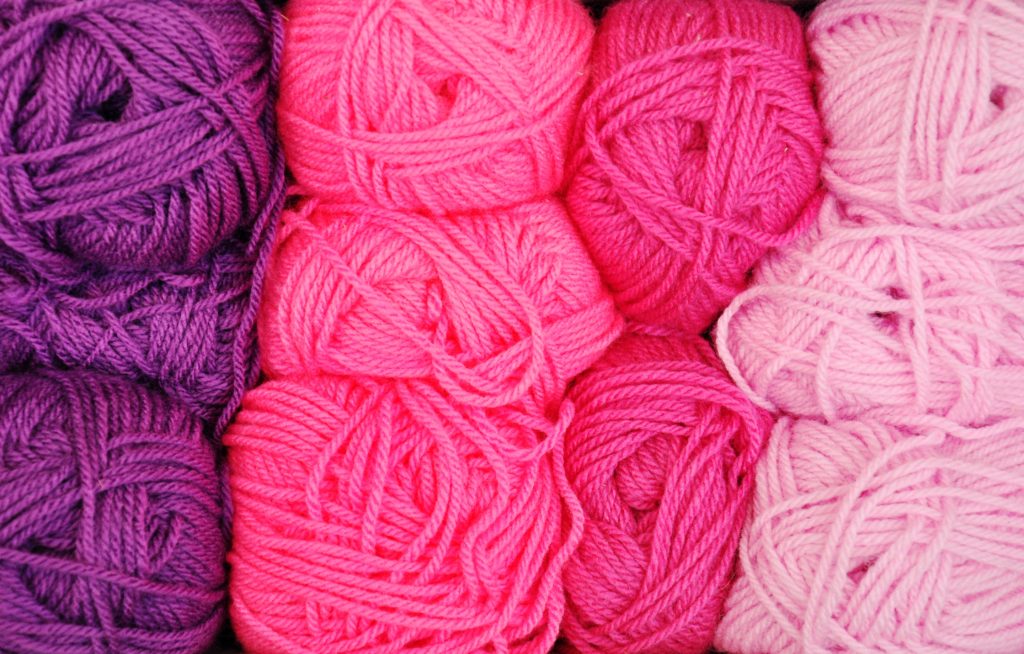The Nose Knows – Why does Acrylic yarn smell?
Have you noticed that with Acrylic yarn, there is a smell that comes off it? Sometimes when it is wet, but more often than not it is just there.
I used to use Acrylic yarn. But when I went into my stash, it had a smell about it. I don’t store my yarns in plastic containers, so there was no chance it could have got damp. I was at a loss to work out what it was. So I did some research. And the results are quite shocking!
Let’s unravel the mystery behind why acrylic yarn might smell compared to natural yarns.
Chemical processing can affect Acrylic yarn odours
Acrylic yarn has gained immense popularity in the world of crafting due to its:
– Affordability
– Durability
– Wide range of colours
However, some crafters have often noticed a distinct smell that comes along with acrylic yarn that can be off-putting.

The chemical processing involved in creating Acrylic yarn can have a significant impact on its odour. When Acrylic is manufactured, various chemical treatments are applied to the fibres to create the desired texture, softness, colour, and appearance. These chemicals, including dyes and finishes, can leave a residual odour on the yarn. While manufacturers take steps to minimise these odours, they may still be noticeable to some crafters.
It is important to note that this odour does not necessarily indicate a lower quality or safety issue with the yarn, but rather a result of its manufacturing process.

The composition of Acrylic yarn
Acrylic yarn, as the name suggests, is made from synthetic fibres derived from petroleum-based chemicals. The primary component of Acrylic yarn is acrylonitrile. Acrylonitrile is a polymer known for its durability, colour retention, and affordability. However, the chemical nature of acrylic yarn can contribute to its unique smell.
This is in contrast to natural yarns, such as wool or cotton, which are made from natural materials. Natural yarns may have a more earthy smell, but this smell will disappear much more quickly compared to the smell of Acrylic yarn. More on this in the next section.
Natural fibres have less odour
In addition to the potential odour caused by the production of Acrylic yarn, natural fibres themselves also tend to have less odour compared to synthetic fibres. This is because natural fibres, such as wool, cotton, and silk, are derived from plants or animals. They do not go through the same chemical processes as synthetic fibres.
As a result, they often have earthy or grassy odours due to their natural origin. While some people prefer these scents, others may find them less appealing. However, natural yarns tend to dissipate their odour more quickly than the chemical smell associated with Acrylic yarn.

Acrylic yarn, moisture and breathability
Synthetic yarns such as Acrylic have a tendency to retain odours, especially when exposed to moisture, sweat, or other substances. Additionally, Acrylic fibres may not provide the same breathability as natural fibres, potentially leading to the accumulation of unpleasant odours over time.
There are also other factors like body oils and environmental conditions that also need to be considered. These external elements can also contribute to the odour of Acrylic yarn.
For instance, if you’re working on a project with Acrylic yarn and your hands have natural oils or lotions on them, these oils can transfer onto the yarn, potentially adding to its odour over time. Similarly, environmental conditions, such as humidity or exposure to smoke or cooking odours in your surroundings, can influence the way Acrylic yarn retains smells.
Natural fibres have the ability to absorb and release moisture, which can help reduce odours caused by sweat and bacteria. Overall, the use of natural fibres can contribute to a fresher and more comfortable experience for the wearer.
I have found in the past that wearing Acrylic accessories in the Winter makes them have a smell. Even hanging them to dry naturally doesn’t really seem to make a difference. This is one of the reasons I have changed to only using natural and recycled yarns.
Recycled Acrylic yarn and odour
The odour of recycled Acrylic and normal Acrylic can vary, primarily depending on the quality of the materials and the manufacturing processes involved.
In general, both recycled and virgin Acrylic may emit a faint chemical odour when first produced. This odour is a result of volatile organic compounds (VOCs) released during the manufacturing process, which can be similar for both recycled and normal Acrylic.
However, it’s worth noting that the quality control measures and purification techniques employed in the production of recycled Acrylic have improved over time.
Consequently, recycled Acrylic materials are often subjected to rigorous purification processes to eliminate impurities and unwanted odours. This ensures that they meet the same odour standards as their virgin counterparts.
Nevertheless, the odour perception of both types of Acrylic can vary from person to person, with some individuals being more sensitive to these odours than others.
Other reasons for choosing natural yarns
In addition to the benefits for both the environment and personal health, choosing natural and recycled fibres over Acrylic can also have a positive impact on the overall quality of the product.
Natural fibres are known for their softness, breathability, and durability, making them a desirable option for many consumers.
On the other hand, Acrylic yarn is often stiff and can have a plastic-like feel, which can be uncomfortable and less appealing.
By opting for natural and recycled fibres, not only are we making a more eco-friendly choice, but we are also choosing a higher quality product that is more comfortable and enjoyable to wear.

Final thoughts
In the debate of Acrylic yarn vs. natural yarns, the issue of smell is an important consideration. Acrylic yarn, due to its synthetic nature and chemical processing, may have a distinct odour that some crafters find off-putting.
Natural yarns, while they have their own unique scents, tend to have odours that are more easily tolerated by most individuals.
So next time you are in the market for yarn or hand crafted gift ideas, consider the benefits of natural and recycled fibres and make the switch for a better and more sustainable experience.

